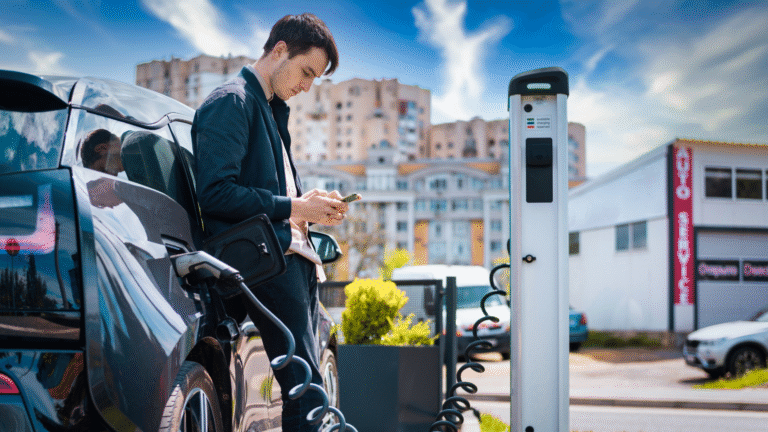As petrol prices rise and city emissions rules tighten, more rideshare drivers in Australia are switching to electric vehicles (EVs) to save money and meet platform incentives. But which EVs actually make sense for high-mileage, stop-start work?
In this article, we break down the best EVs for rideshare drivers based on comfort, range, operating costs, and real-world feedback from drivers using Uber, DiDi, Ola, and other services.
—
Table of Contents
- Why EVs Make Sense for Rideshare Work
- Key Criteria for a Rideshare-Friendly EV
- Top EV Picks for Australian Rideshare Drivers
- Operating Costs: Charging vs Fuel
- What Drivers Say: Real Feedback
- Tips for Rideshare Drivers Switching to EVs
- Conclusion
—
1. Why EVs Make Sense for Rideshare Work
Rideshare driving involves long hours on the road, frequent braking, and constant idling. EVs are built for this:
- No idling means no wasted energy in traffic
- Regenerative braking improves efficiency and reduces brake wear
- Lower maintenance costs due to fewer moving parts
- Instant torque makes for smooth acceleration in urban traffic
- Quiet cabins and smooth rides enhance passenger experience
Platforms like Uber and DiDi are also incentivising EVs through reduced service fees and better ratings.
—
2. Key Criteria for a Rideshare-Friendly EV
Rideshare drivers need more than just a low-emissions vehicle. Ideal EVs must offer:
- A minimum real-world range of 300+ km
- Fast DC charging capability (at least 80 kW)
- Comfortable seating for 4+ adults
- Sufficient boot space for luggage
- Affordable purchase price or leasing options
- High efficiency (kWh/km) for better savings
- Strong local servicing support
—
3. Top EV Picks for Australian Rideshare Drivers
Here are the standout EVs in 2025 that meet rideshare demands:
Tesla Model 3 RWD
- Real-world range: 430–470 km
- Boot capacity: 561L
- Pros: Excellent efficiency, Supercharger access, great driver tech
- Cons: Higher upfront cost, minimalist interior not for everyone
BYD Atto 3 Extended Range
- Real-world range: ~420 km
- Boot capacity: 440L
- Pros: Strong value for money, spacious interior, great standard features
- Cons: Quirky design may not appeal to all passengers
Hyundai Ioniq 5 Dynamiq
- Real-world range: 440–480 km
- Boot capacity: 527L
- Pros: Excellent ride quality, roomy interior, ultra-fast charging
- Cons: Higher cost, large footprint for tight city streets
MG4 Excite Long Range
- Real-world range: ~435 km
- Boot capacity: 350L
- Pros: Budget-friendly, agile handling, low running costs
- Cons: Rear space and cargo room are tight
Kia Niro EV S
- Real-world range: ~410 km
- Boot capacity: 475L
- Pros: Compact but practical, proven drivetrain, good warranty
- Cons: Conservative styling, slightly dated infotainment
—
4. Operating Costs: Charging vs Fuel
For drivers clocking 1,000+ km per week, EVs can offer substantial savings:
- Average cost to charge at home (off-peak): $0.15–0.25 per kWh
- Equivalent ‘fuel’ cost per 100 km: $3–$6
- ICE vehicle fuel cost per 100 km: $12–$16
- Annual savings: $3,000–$5,000 or more (depending on usage and charging habits)
Many drivers also report reduced maintenance visits (no oil changes, fewer brake replacements), which saves both time and money.
—
5. What Drivers Say: Real Feedback
EV rideshare drivers in Australia often cite:
- Quieter, smoother rides leading to better passenger ratings
- Lower fatigue due to less engine vibration and smoother acceleration
- Anxiety around charging, especially during peak hours or airport queues
- Range being more than sufficient for full-day shifts with a mid-shift top-up
- Interest in using workplace or apartment charging to avoid public charger wait times
—
6. Tips for Rideshare Drivers Switching to EVs
- Use apps like PlugShare or Chargefox to plan charging around shift breaks
- Consider leasing if you want flexibility as the market evolves
- Educate passengers with simple facts if they ask about your EV
- Take advantage of platform EV programs (e.g., Uber Green incentives)
- Keep a Type 2 charging cable and backup AC adapter in your boot
—
7. Conclusion
Switching to an EV as a rideshare driver is no longer a fringe choice—it’s quickly becoming the smart economic move. With better range, comfort, and cost efficiency, modern EVs meet the unique demands of rideshare work while boosting passenger satisfaction.
Choose based on your typical shift distance, preferred cabin feel, and access to charging, and you’ll likely find an EV that fits both your business and lifestyle.
—
Looking to go electric for Uber or DiDi? We compare the best EVs for rideshare drivers in Australia—range, comfort, costs, and real-world feedback included.
